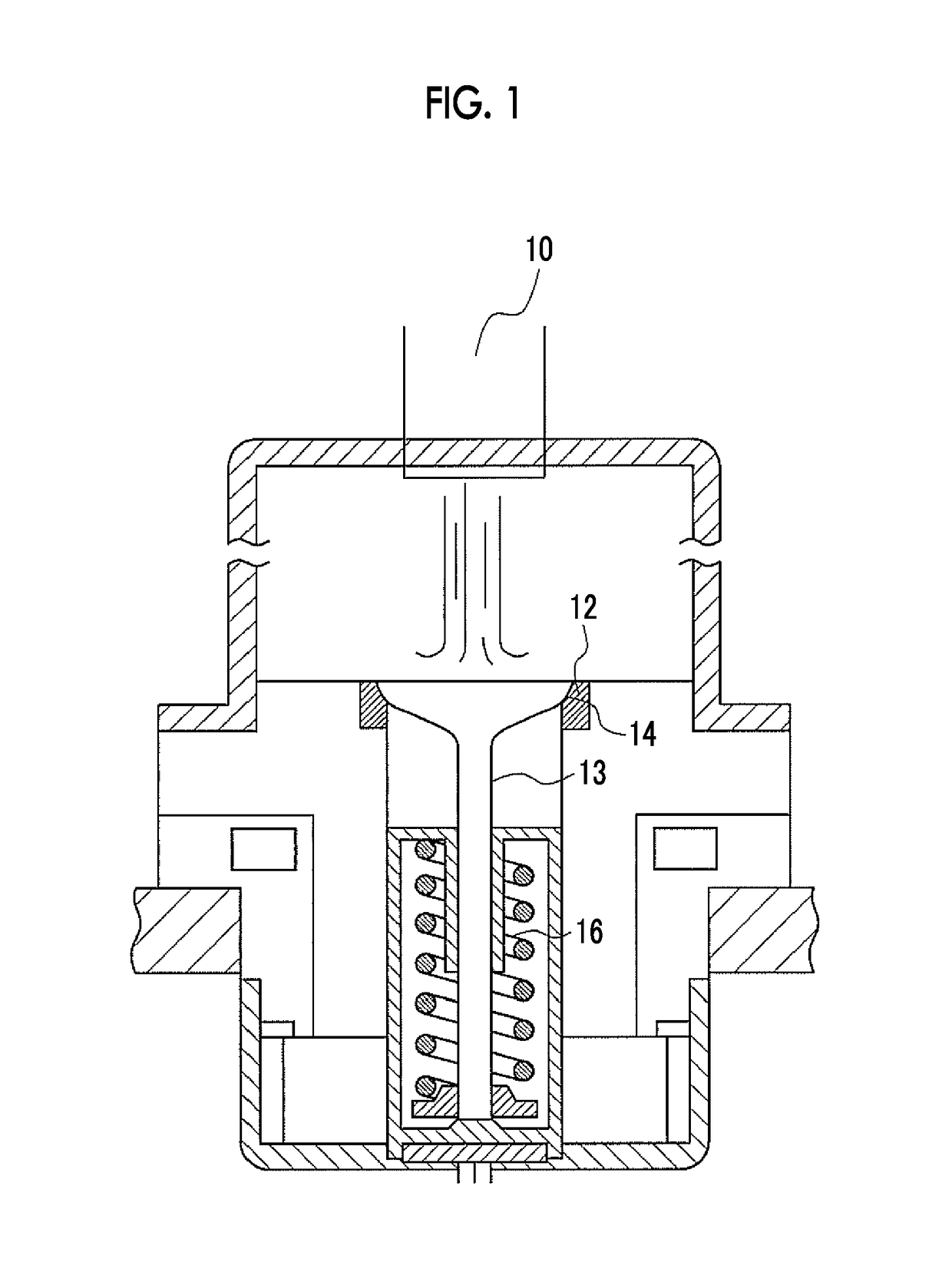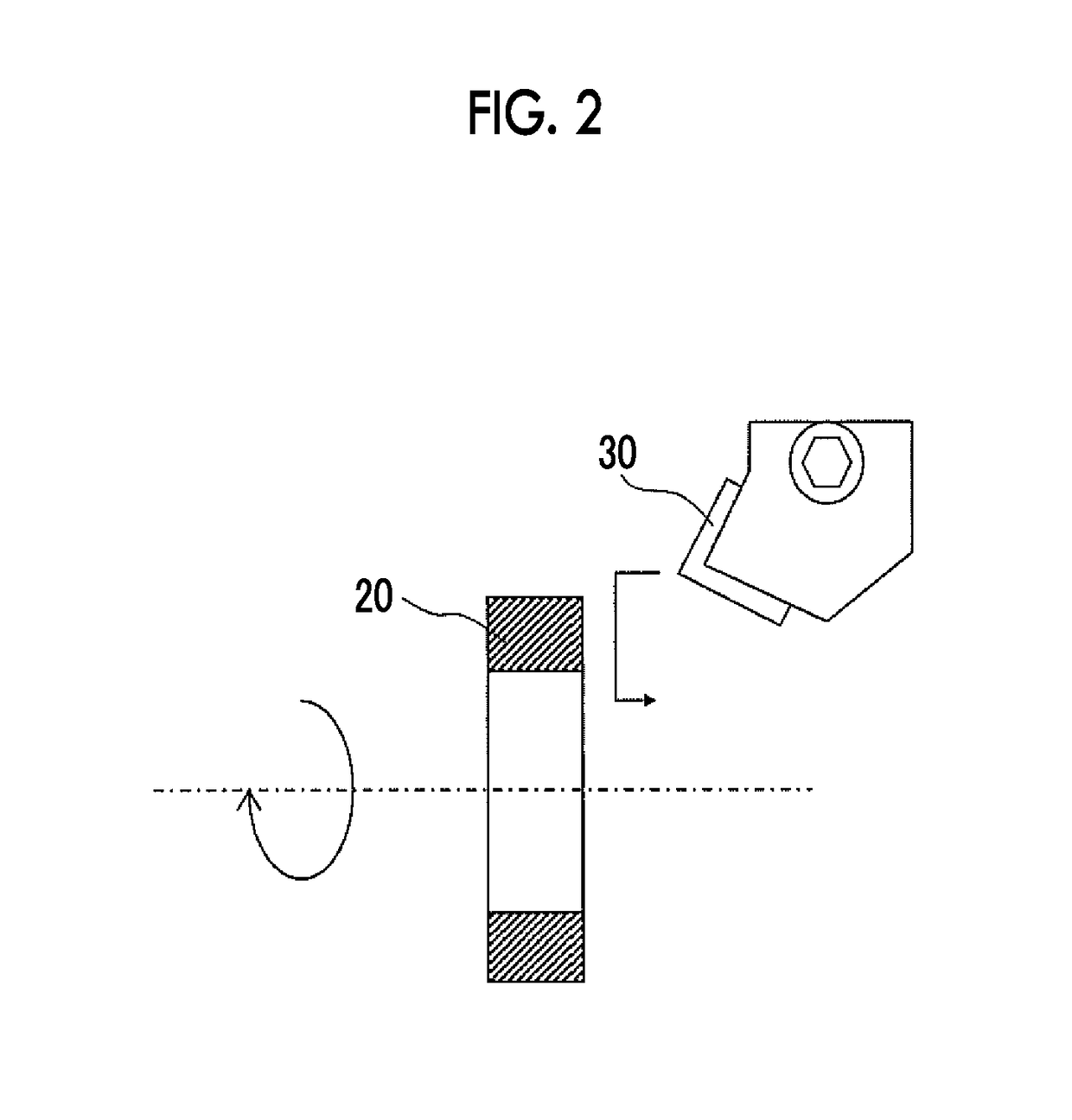Manufacturing method of sintered alloy, compact for sintering, and sintered alloy
a manufacturing method and alloy technology, applied in the field of manufacturing methods of sintered alloys, can solve the problems of reduced machinability, difficult balance between adhesive wear resistance and machinability, and achieve the effect of ensuring the machinability of sintered alloys
- Summary
- Abstract
- Description
- Claims
- Application Information
AI Technical Summary
Benefits of technology
Problems solved by technology
Method used
Image
Examples
example 1
[0088]A sintered alloy according to Example 1 was manufactured by the following manufacturing method. As the first hard particles, hard particles (manufactured by Sanyo Special Steel Co., Ltd.) were prepared. The hard particles were produced from an alloy that contained 30 mass % of Mo, 5 mass % of Cr, 6 mass % of Mn, and the remainder formed with Fe and inevitable impurities (that is, Fe-30Mo-5Cr-6Mn) by a gas atomizing method. A sieve that complies with JIS Standard Z8801 was used to classify the first hard particles into a range of 44 μm to 250 μm. Note that values classified by this method are used as “the particle size (the particle diameter) of the particle” in this specification.
[0089]As the second hard particles, second hard particles (manufactured by KINSEI MATEC CO., LTD.) were prepared. The second hard particles were produced from a Fe-65Mo-1Si alloy that contains 65 mass % of Mo, 1 mass % of Si, and the remainder formed with Fe and inevitable impurities by a grinding met...
examples 2 , 3
Examples 2, 3
[0092]Test pieces of the sintered alloy were produced in the same manner as Example 1. As shown in Table 1, Example 2 differs from Example 1 in such a way that the composition of the first hard particles was Fe-30Mo-10Cr-6Mn (Cr was increased to occupy 10 mass %).
[0093]As shown in Table 1, Example 3 differs from Example 1 in such a way that the composition of the first hard particles was Fe-35Mo-10Cr-6Mn (Mo was increased to occupy 35 mass %, and Cr was increased to occupy 10 mass %).
examples 4 to 7
tive Amount of the First Hard Particles
Test pieces of the sintered alloy were produced in the same manner as Example 1. Examples 4 to 7 are examples that were implemented to evaluate an optimum additive amount of the first hard particles.
[0109]As shown in Table 2, Example 4 differs from Example 1 in such a way that the first hard particles occupying 5 mass % of the entire mixed powder were added. A test piece of the sintered alloy in Example 5 was the same as that in Example 1.
[0110]As shown in Table 2, Example 6 differs from Example 1 in points that the first hard particles occupying 40 mass % of the entire mixed powder were added and that the composition of the first hard particles was Fe-25Mo-5Cr-6Mn (Mo was reduced to occupy 25 mass %).
[0111]As shown in Table 2, Example 7 differs from Example 1 in points that the first hard particles occupying 50 mass % of the entire mixed powder were added and that the composition of the first hard particles was Fe-30Mo-10Cr-6Mn (Cr was increas...
PUM
| Property | Measurement | Unit |
|---|---|---|
| particle diameter | aaaaa | aaaaa |
| mass % | aaaaa | aaaaa |
| mass % | aaaaa | aaaaa |
Abstract
Description
Claims
Application Information
 Login to View More
Login to View More - R&D
- Intellectual Property
- Life Sciences
- Materials
- Tech Scout
- Unparalleled Data Quality
- Higher Quality Content
- 60% Fewer Hallucinations
Browse by: Latest US Patents, China's latest patents, Technical Efficacy Thesaurus, Application Domain, Technology Topic, Popular Technical Reports.
© 2025 PatSnap. All rights reserved.Legal|Privacy policy|Modern Slavery Act Transparency Statement|Sitemap|About US| Contact US: help@patsnap.com



